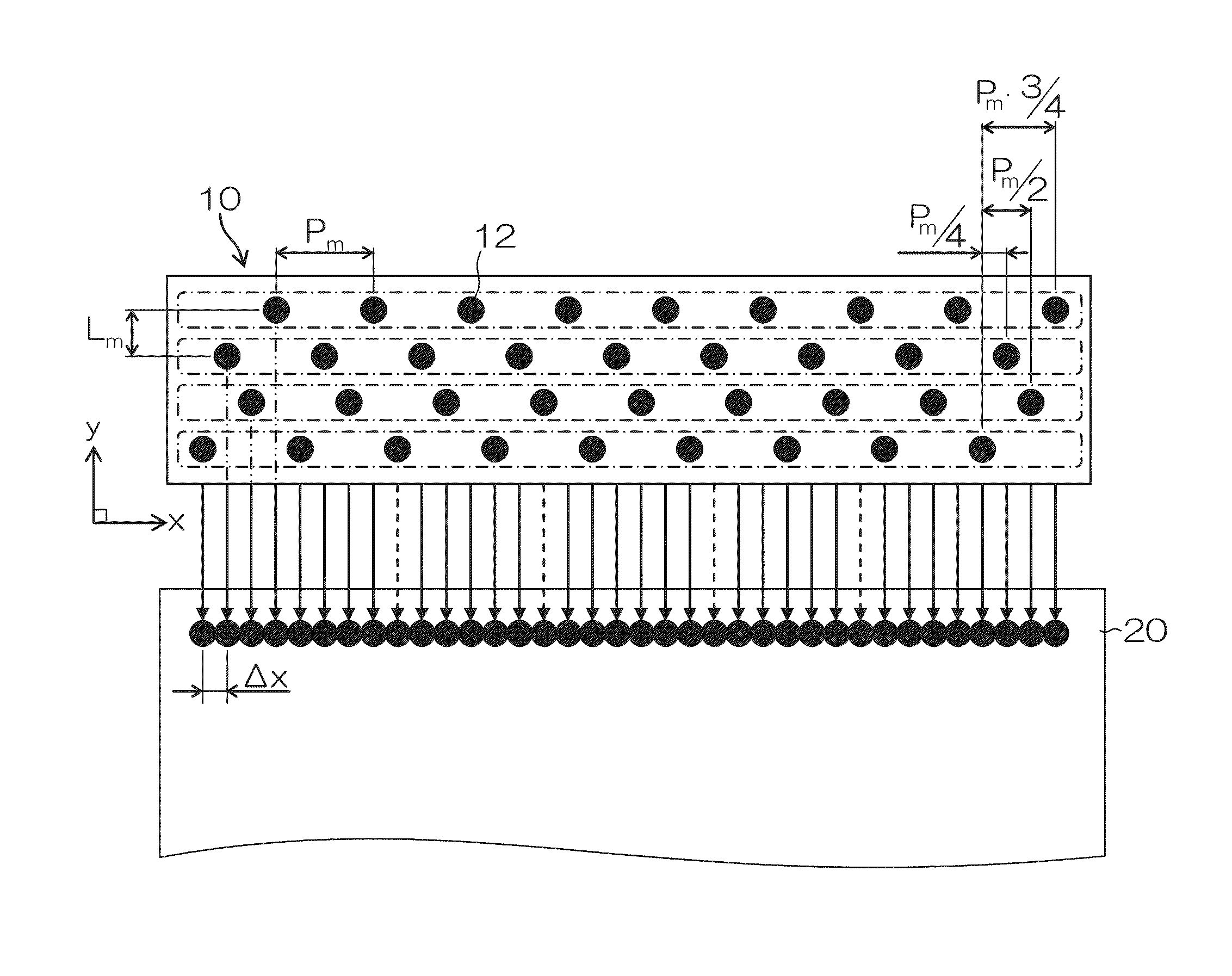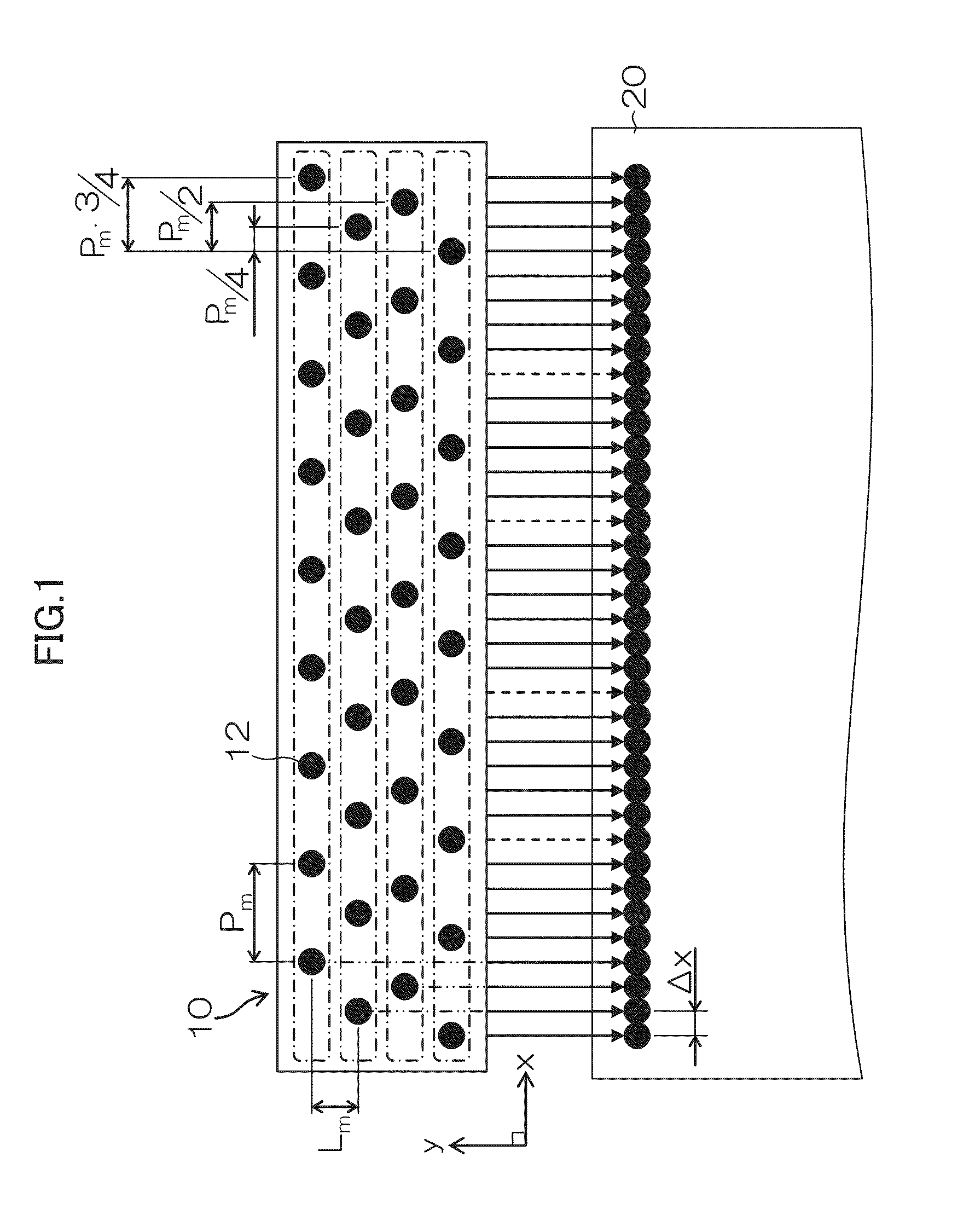Method of printing test pattern and inkjet recording apparatus
a test pattern and inkjet recording technology, applied in the direction of printing, other printing apparatus, etc., can solve the problems of dummy shots actually soiling the nozzle surface, affecting the quality of printing, and increasing the viscosity of the ink, so as to improve the quality of printing. , the effect of maintaining recording stability
- Summary
- Abstract
- Description
- Claims
- Application Information
AI Technical Summary
Benefits of technology
Problems solved by technology
Method used
Image
Examples
first embodiment
of Control of Printing Operation in Inkjet Recording Apparatus
[0107]FIG. 8 is a flowchart showing a first embodiment of control of a printing operation in an inkjet recording apparatus according to the embodiment of the present invention.
[0108]When the power supply to the apparatus is switched on (step S10), either manually or by automatic control from an external source, then judgment of the input of a print signal is performed (step S12). If there is no input of a print signal, the processing in step S12 is looped and the procedure awaits the input of a print signal. The print signal may be issued in accordance with an operation performed by an operator to instruct execution of a print, or may be issued from an external apparatus, such as a host computer. When a print signal is input, a YES verdict is produced at step S12, and the procedure advances to step S14.
[0109]At step S14, a test pattern according to the present embodiment is printed. For example, the ejection force is rais...
second embodiment
of Control of Printing Operation in Inkjet Recording Apparatus
[0127]When the defective ejection nozzles have been restored, it is possible for these nozzles to be used again for printing. When the restored nozzles are used for printing, desirably, a test pattern is formed again and it is checked whether the nozzles can be used. FIG. 12 shows an example of this.
[0128]FIG. 12 is a flowchart showing a further example of control of a printing operation in an inkjet recording apparatus according to an embodiment of the present invention. In FIG. 12, the steps which are the same as or similar to those in FIG. 8 are denoted with the same step numbers and description thereof is omitted here.
[0129]In the example in FIG. 12, after ejection from the defective nozzles in step S20, the procedure advances to step S22 and a test pattern is output again. The ejection conditions in this case may be the same as, or different to, the first time in step S14. For example, in step S22, it is possible to ...
PUM
 Login to View More
Login to View More Abstract
Description
Claims
Application Information
 Login to View More
Login to View More - R&D
- Intellectual Property
- Life Sciences
- Materials
- Tech Scout
- Unparalleled Data Quality
- Higher Quality Content
- 60% Fewer Hallucinations
Browse by: Latest US Patents, China's latest patents, Technical Efficacy Thesaurus, Application Domain, Technology Topic, Popular Technical Reports.
© 2025 PatSnap. All rights reserved.Legal|Privacy policy|Modern Slavery Act Transparency Statement|Sitemap|About US| Contact US: help@patsnap.com



